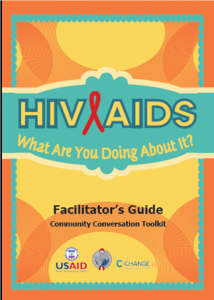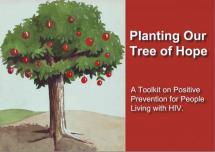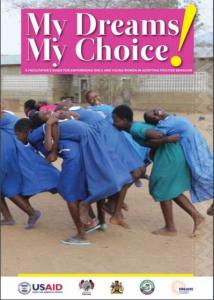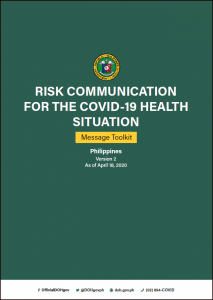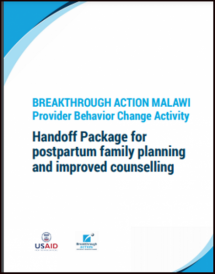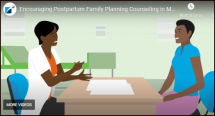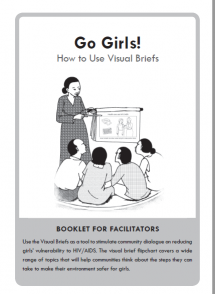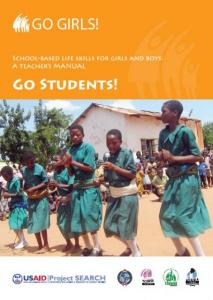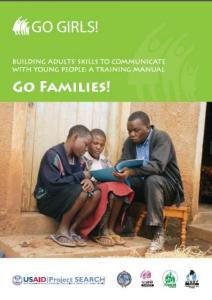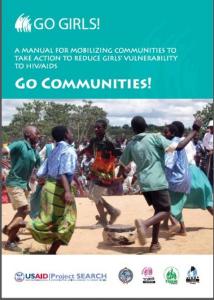Community Conversation Toolkit for HIV Prevention – Facilitator’s Guide
Materials in this toolkit include a facilitator’s guide, community mobilizer’s cards, roleplay cards, storytelling finger puppets, promotional proverbs and best kept secrets throw boxes, promotional playing cards, and dialogue buttons. These formats are designed to mobilize adults aged 20 and above in communities to take action toward HIV prevention.
The toolkit is intended to complement existing HIV prevention activities and address several key drivers: concurrency, cross-generational sex, gender-based violence, and alcohol abuse. Each material in the toolkit was tested with community mobilizers and men and women ages 20 and above in community. Sixty-nine focus group discussions and 34 in-depth interviews were conducted with men and women and with trained community facilitators who lead discussions using the materials. The toolkit has also been adapted in Lesotho, Nigeria, and Swaziland and is available in 10 languages.
The Facilitator’s Guide describes each item in the toolkit and how to use it.
Source: FHI 360
Date of Publication: August 9, 2021
SIMILIAR RESOURCES
Tools
Examples
- Community Communication MNCH e-Manual: Participatory Health Promotion Sessions
- Advocating for Change for Adolescents’ Toolkit
- Creating Mobile Health Solutions for Behaviour Change: A Study of Eight Services in the mNutrition Initiative Portfolio
- Guidance for Providing Informed-Choice Counseling on Sexual Health for Women Interested in PrEP: Kenya and South Africa
- Men's Health Kit
- Family Planning Counselling Kit
- Driving the HIV response: Community Guide to the WHO 2013 Consolidated Guidelines on the Use of Antiretroviral Drugs for Treating and Preventing HIV Infection
- The ECHO Study Report
- Gender Norms, Intersectionality and Social Protection: In Conversation with UNICEF's Dr Zahrah Nesbitt-Ahmed
- Best Practices for Planning a Vaccination Campaign for an Entire Population
- #EndAdolescentAIDS Fact Sheets
- Go Students! School-Based Life Skills for Girls and Boys: A Teacher's Manual
- Planting Our Tree of Hope: A Toolkit on Positive Prevention for People Living with HIV - Flipchart
- Tasankha! Discussion Guide
- For People Like Us: An HIV/AIDS Participatory Learning Assessment Tool

